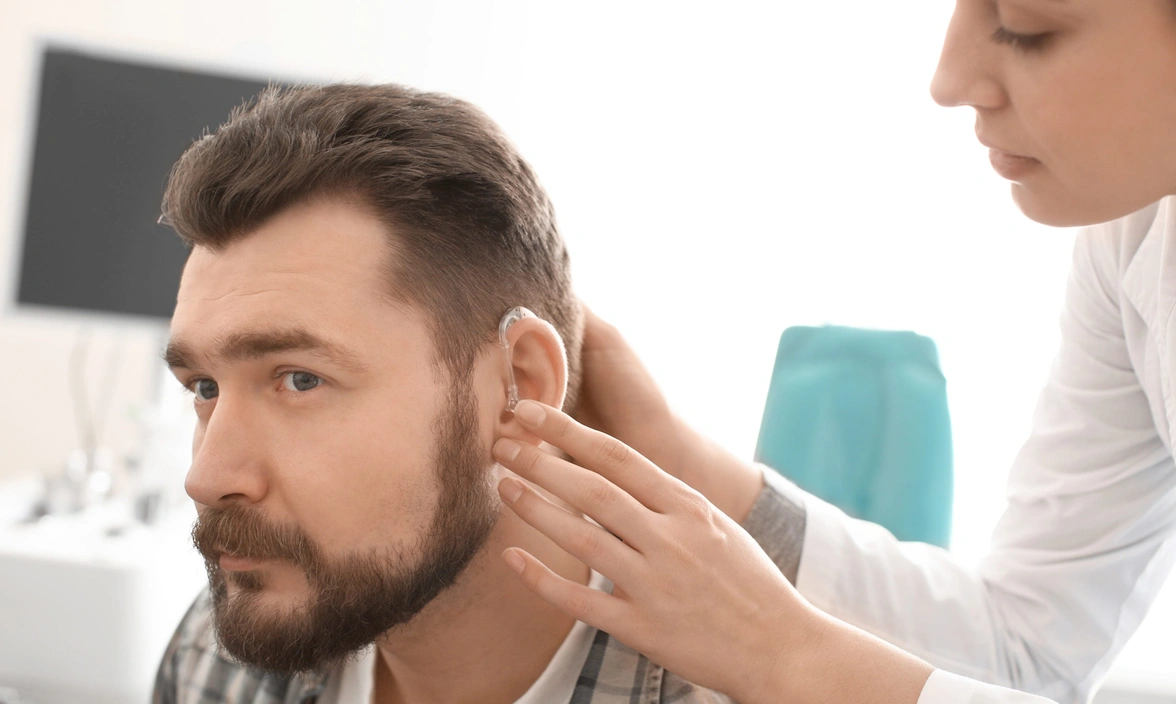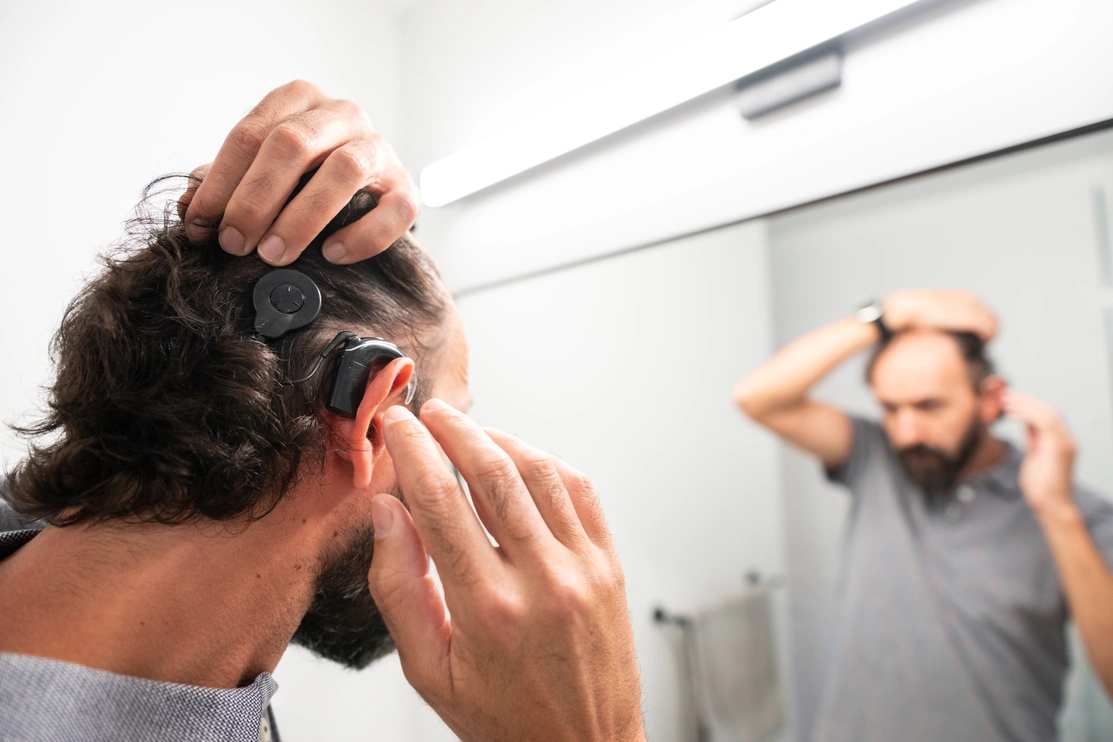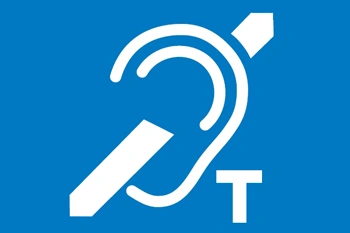Hearing devices and how they can help
Now you have been diagnosed with hearing loss, you might be ready to explore how hearing aids can make a positive difference to your daily life.
Now you have been diagnosed with hearing loss, you might be ready to explore how hearing aids can make a positive difference to your daily life.

Your audiologist may have recommended a hearing aid for one or both ears to help improve how you experience sound.
With the right hearing aid, you can regain confidence in social situations. They will help you to feel more connected with loved ones and to live better with your hearing.
Here, we explain a bit more about how hearing devices work.
Despite there being many types of hearing aid with varying technical features; they are generally described as small, wearable electronic devices.
Hearing aids amplify sounds to help a person with hearing loss understand speech more clearly or sounds such as the telephone, TV, or doorbell. Additionally, they can help improve communication and conversations in noisy environments.
They work in similar ways to hearing aids but require surgical intervention. For further information about the types of hearing implants available and how they can help, visit our webpage.

Most types of hearing aid work or function in a similar way, even though the outcome needs to be different for each person.
Firstly, sound passes through a miniature microphone where it is then converted into an electronic, digital signal.
Secondly, the signal is processed, boosted, and modified to meet the needs of the user’s hearing loss.
Finally, a receiver (miniature loudspeaker) sends the processed sound through the type of ear fitting appropriate for your hearing aid system.
The audiology professional who assesses your hearing will discuss what type of device would help based not only on your hearing loss, but also on your lifestyle needs.
Importantly, if you have hearing loss in both ears as most people do, you should expect to use two hearing aids.
Whether you are prescribed your hearing aids by an NHS or a private service, most hearing aids are digital. They will be programmed to suit the needs of both your hearing loss and your lifestyle.
It takes time to adjust to hearing aids. You will need to have your hearing professional fine-tune them once, or more, after you have had time to adjust to them and understand how they are working for you.
It is quite normal for changes to be made after fitting. Everyone is individual and usually benefits from hearing aids being as personalised as possible.
All digital aids have different settings for different environments, for example, in a group, one-to-one conversation, in a quiet room or in noisier places. Your audiologist should provide comprehensive instructions to explain these options.
Always remember that they are your hearing aids, programmed to meet your individual needs. Discuss these needs directly with your audiologist.
Most digital hearing aids have a loop or ‘T’ (telecoil) setting which means they are compatible for use with hearing loop systems. Ask your audiologist if your hearing aids can be programmed, so that the ‘T’ setting is active. This will mean they can be used with hearing loops in public places and also other assistive devices that use loop technology.
For smartphones phones, ask your audiologist how to connect to it wirelessly (e.g. Bluetooth technology) with your hearing aids. You may discover that your brand of hearing aid is supported by a companion smartphone app which makes this process easier.

Some hearing aids have controls you can use while others automatically vary their settings depend on the environment you are in.
Others can be adjusted using a hand-held remote control or through an app on your smartphone.
Always ensure that your audiologist understands your preferences to help ensure that you make fully informed decisions on what your needs are.
With several types of hearing aids available, it is important to work closely with your audiologist to find the right fit for your hearing loss and lifestyle.
NHS services typically offer behind-the-ear aids, which are free to prescribe, but remain NHS property.
Private audiologists provide a wider range of options, with various fitting styles, sizes, and features, often from multiple manufacturers to best suit your needs and preferences. These are paid-for professional services.
Find out more about the differences between NHS and private hearing aid provision.
It can several months to get used to using new hearing aids. What you experience will depend on your hearing loss, your lifestyle needs and how much you use them.
If this is your first time using hearing aids, your brain will begin to register sounds that it has not heard well for some time. So, you might feel tired by listening or overwhelmed by new noises. This can also happen when changing to a new hearing aid.
As you continue using your new aids, your brain learns to recognise the new sounds, and they become more acceptable. It is important to keep going and, if you feel you need it, to ask for support from your audiologist.
Learn more about adjusting to hearing aids. Your audiologist can also give you advice on the best techniques for getting used to them.
This video requires marketing cookies to be viewed. Please accept cookies to view this video content.
Registered charity in England and Wales no. 293358 and in Scotland no. SC040486. Royal Patron HRH The Princess Royal.